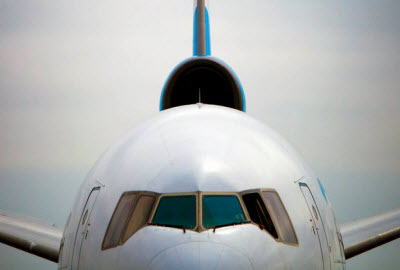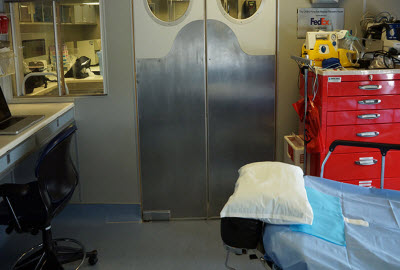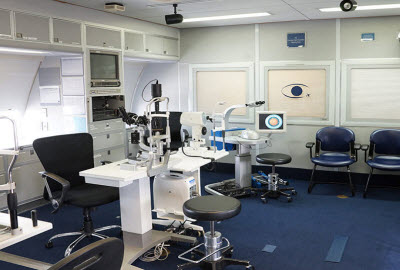A unique plane brings hope to the blind around the world
- Written by George Sensalis
 The Flying Eye Hospital airplane helps Orbis purvey prevention and deliver treatment for avoidable blindness around the world.
The Flying Eye Hospital airplane helps Orbis purvey prevention and deliver treatment for avoidable blindness around the world.
Two hundred eighty five million people worldwide have some form of visual impairment, a condition for which successful treatment could be available. Blindness takes away much more than vision. It can impede access to education and prevent people from finding employment.
When sight is restored adults can return to work, children go back to school. Defeating preventable blindness is crucial to build a better future for families.
Since 1982 Orbis performed 23.3 million medical and optical treatments and trained over 325.000 doctors and nurses in 92 countries across the world.
Orbis results from a unique alliance between the medical and aviation industries. The organisation works with world’s leading ophthalmic medical experts to deliver training to local doctors on-board the Flying Eye Hospital or remotely through the Cyber-Sight portal.
Thanks to its unique plane, Orbis flies dedicated eye care professionals to deliver the gift of sight around the world. Local doctors,  nurses and technicians work alongside the organisation’s medical team in the airplane’s operating, laser, sterilisation and recovery rooms to protect and restore sight. The Flying Eye Hospital undertakes 7-8 training programmes each year around the world.
nurses and technicians work alongside the organisation’s medical team in the airplane’s operating, laser, sterilisation and recovery rooms to protect and restore sight. The Flying Eye Hospital undertakes 7-8 training programmes each year around the world.
The project took flight with a grant from USAID and funds from private donors that financed the transformation a DC 8 plane into a teaching eye hospital.
Thanks to a major fundraising appeal, Orbis purchased a wide-body DC 10 to replace the DC-8. After two-year-long extensive refurbishment the plane became the first ever flying eye surgery hospital.
On the outside, the plane is like most other aircraft. Inside, the plane hosts an ophthalmic hospital and teaching facility right on board.

At the front of the airplane, a 48-seat classroom fitted with state-of-the-art technology is used to train local doctors and nurses. Eye healthcare professionals use the classroom for lectures and discussions. A wide screen is used to broadcast live surgeries taking place on board the Flying Eye Hospital operating room.

A recovery room fitted with three beds is used to prepare patients for surgery and recover after eye procedures. The area is also used to train local nurses in patient care.

The sub-sterile room is used by staff to sterilise instruments for surgery and by doctors to wash their hands before entering the operating theatre. Water loaded on the plane goes through 12 high-quality carbon medical grade water filters to filter out all the bacteria and soaked up by the carbon.
The plane’s air filtration system was modified to meet stringent standards. All air going to the sub-sterile and operating room goes through the filtration process to remove all bacteria before being pumped into the hospital.
The state-of-the-art operating room is located mid-cabin, in line with the plane's wings. Five cameras give close-up view of the procedure and wide shots of the operating area.

The plane is also fitted with a laser room where laser surgery is performed and patients are examined before and after conventional eye surgery. Cameras fitted on instruments allow trainees to follow procedures from the classroom.

The work to give access to quality eye care is far from done. Orbis next-generation Flying Eye Hospital, an MD-10 donated by FedEx, is being retrofitted in California and will soon enter service.










